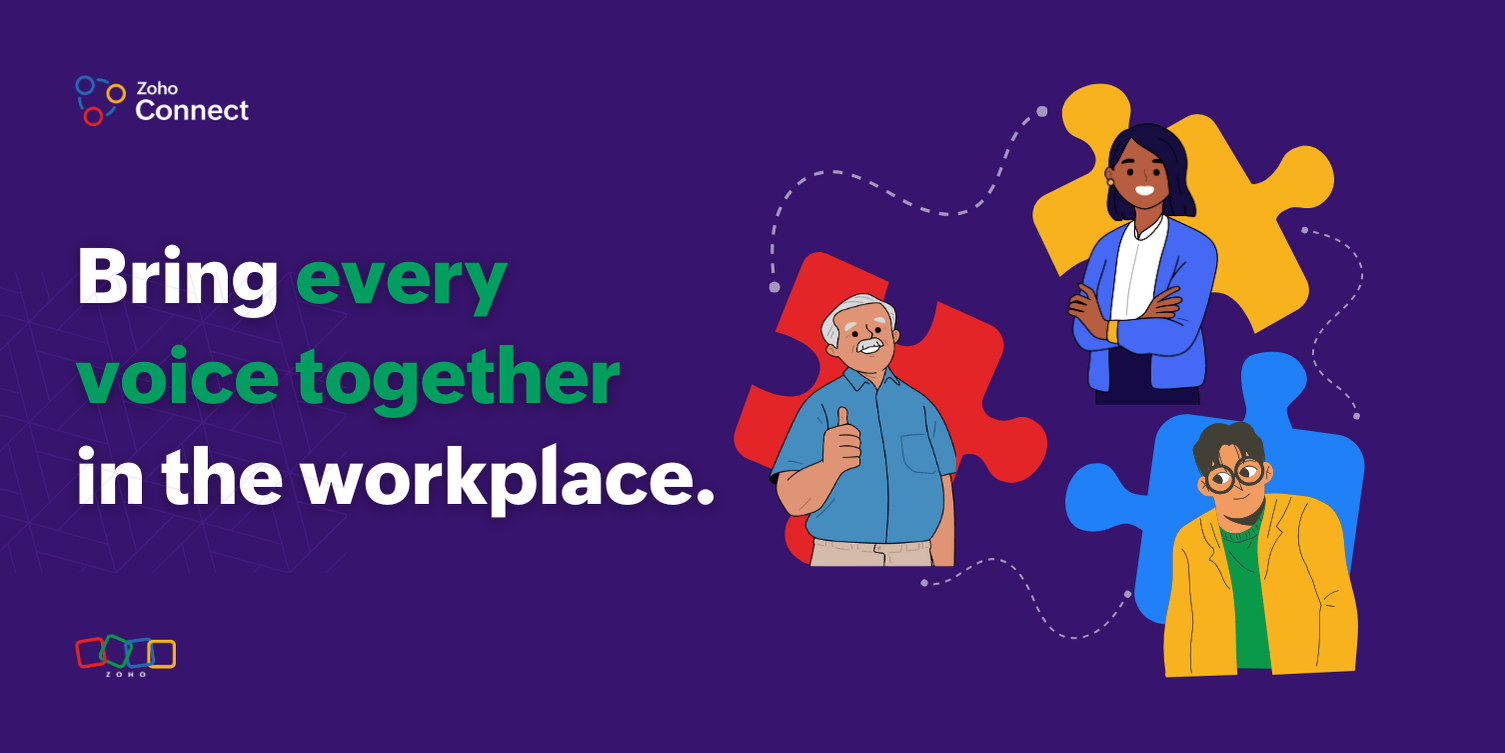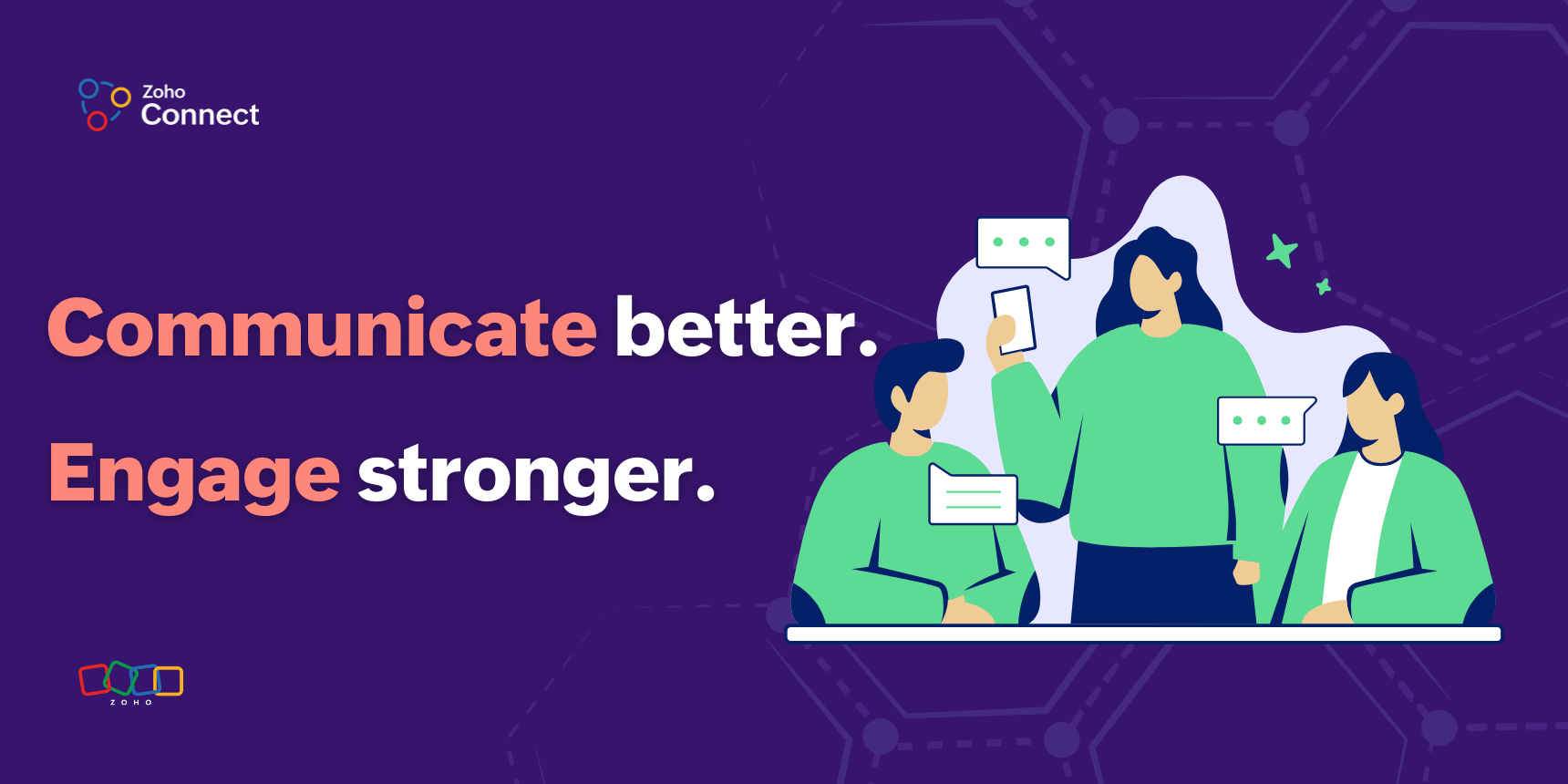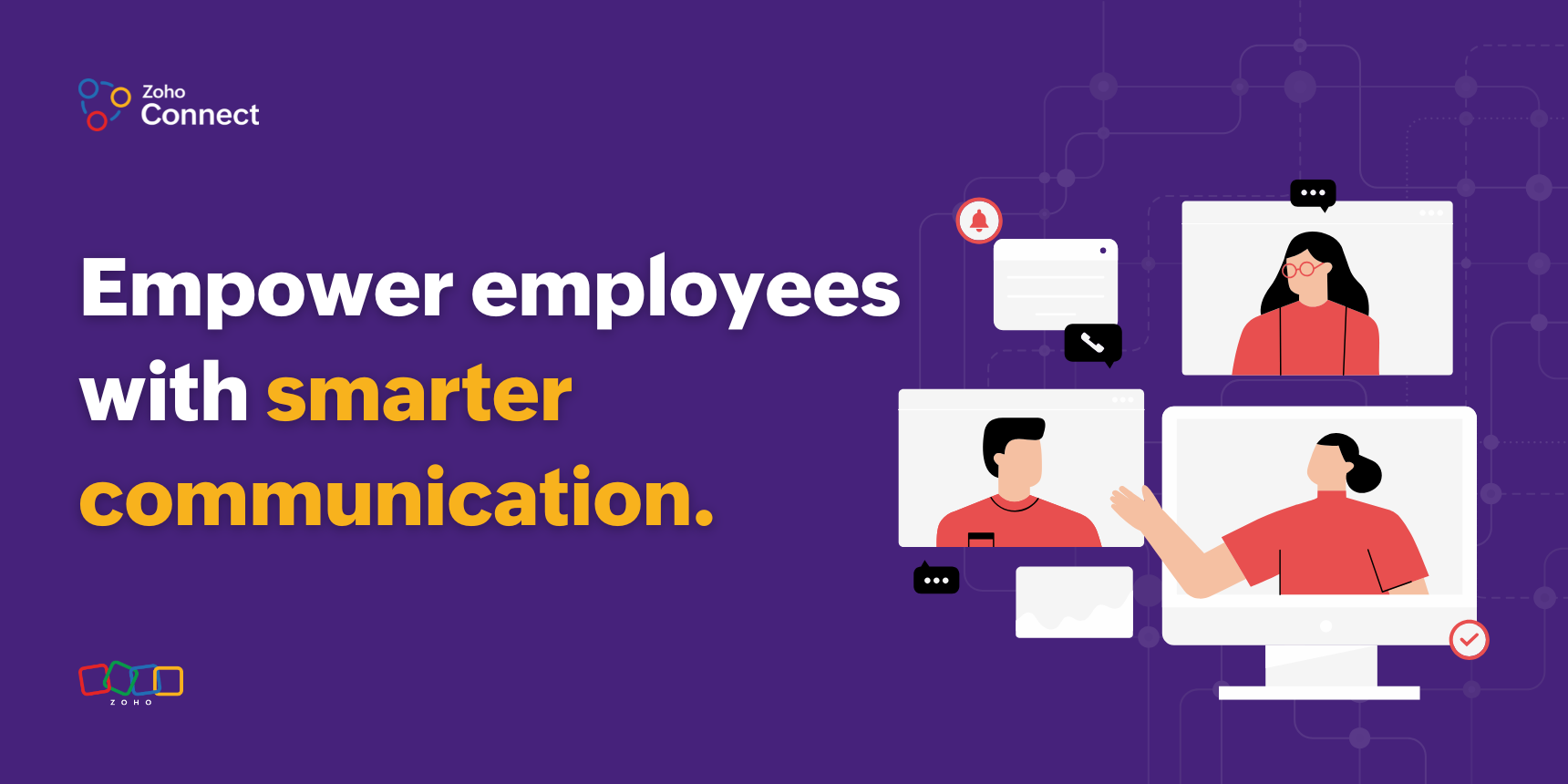- HOME
- Internal Communications
- How to overcome communication barriers in a multi-generational workforce
How to overcome communication barriers in a multi-generational workforce
- Last Updated : February 13, 2025
- 69 Views
- 6 Min Read

Today's workplace is a dynamic blend of generations, each with its own communication style. Some rely on detailed emails, others prefer quick chat messages. Some take notes by hand, others record voice memos on the go. With so many approaches, communication can sometimes feel a little all over the place.
But thatтs not a challengeтitтs an advantage. A workplace with diverse generations brings together deep experience, fresh perspectives, and a variety of problem-solving methods. Seasoned professionals offer wisdom and insights, while newer voices introduce innovative ideas and fresh ways of thinking.
The key is to embrace these differences. Whether it's a casual conversation, a structured email, or a quick voice note, making space for every communication style fosters stronger collaboration. When everyone feels heard and valued, connections grow, ideas thrive, and the workplace becomes a place where all generations can work and communicate together effortlessly.
The strengths of a multi-generational workforce
Each generation has faced defining moments that have modeled their perspectives, values, and work habits. Over the years, a lot of factors have influenced how people approach work, communicate, and collaborate. By recognizing these influences, we can better appreciate the diversity they bring to the workplace.
Some people grew up during times of great changeтcivil rights movements, major wars, and space exploration. They learned resilience, teamwork, and the importance of making a difference. They believe in hard work and strive for excellence, bringing dedication and a strong work ethic to any role.
Others witnessed technological advancements and shifts in the global economy. They watched industries change overnight, experienced job market uncertainty, and learned to be adaptable. This made them independent problem-solvers, comfortable with change, and pragmatic in their decision-making. They bridge the gap between traditional and modern work environments, understanding the importance of both structure and flexibility.
Some were raised in an era of rapid digital transformation, growing up with the internet, social media, and smartphones. They value connectivity, collaboration, and instant feedback. Having seen global challenges unfold in real time, they prioritize diversity, inclusion, and social responsibility. They bring energy, creativity, and a strong sense of purpose to their work, pushing organizations to think beyond conventional solutions.
Then, there are those who have never known a world without technology. They're digital natives who communicate through quick messages, prefer efficiency, and expect information at their fingertips. They grew up in a time of economic uncertainty and shifting social landscapes, making them adaptable, independent, and innovative. They challenge traditional norms and embrace new ways of working.
When these diverse perspectives come together, they create a dynamic workforce that blends experience with fresh ideas, tradition with innovation, and stability with agility. The challenge is not in the differences but in how organizations choose to leverage them.
So, how do we bridge these gaps? Letтs dive into some practical strategies.
Strategies to bridge the communication gap
1. Embrace a culture of mutual respect.
The first step in overcoming communication barriers is recognizing that no one way of communicating is superior. Instead of viewing differences as obstacles, organizations should promote a culture where all styles are valued. Hereтs how:
Encourage open conversations. Create an environment where employees feel comfortable expressing their communication preferences.
Avoid generational stereotypes. Not all Baby Boomers struggle with technology, and not all Gen Zers are glued to their phones.
Promote empathy. Encourage employees to step into each otherтs shoes and appreciate different viewpoints.
When employees feel understood and respected, theyтre more likely to communicate effectively.
2. Leverage technology to bring people together.
Technology can either unite or divide teams, depending on how itтs used. Platforms like зюаТВЉВЪЭјеО Connect can streamline communication and make it easier for all generations to connect with each other.
Employee experience platforms like Connect offer a mix of chat, forums, and video calls, allowing employees to communicate in their preferred way.
Video meetings create a balance between traditional face-to-face interactions and modern remote work flexibility.
Internal networks like Connect keep conversations efficient and engaging for those who prefer quick interactions.
Itтs also important to offer training and support for employees who may not be as comfortable with certain technologies. A little guidance can go a long way in making digital communication accessible for everyone.
3. Encourage active listening and open dialogue.
Great communication isnтt just about speakingтitтs also about listening. When employees feel heard, they're more likely to engage and collaborate effectively.
Ways to foster active listening:
Encourage employees to listen without interrupting or jumping to conclusions.
Summarize key points after a discussion to ensure clarity.
Ask clarifying questions to show engagement and avoid misunderstandings.
By fostering a culture of active listening, organizations can create an environment where everyone, regardless of generation, feels valued and understood.
4. Implement cross-generational mentorship.
One of the best ways to bridge communication gaps is through mentorship. Pairing employees from different generations fosters mutual learning and appreciation.
Reverse mentoring: Younger employees help older colleagues navigate new technologies and trends.
Traditional mentoring: Experienced employees share career wisdom, leadership insights, and professional guidance.
Mutual mentoring: Both parties learn from each other, creating a dynamic and collaborative workplace.
Cross-generational mentorship breaks down stereotypes, strengthens relationships, and improves overall workplace communication.
5. Adapt workplace policies for a diverse workforce.
A one-size-fits-all approach no longer works in todayтs workplace. Employees have different expectations regarding flexibility, work-life balance, and career growth. Organizations that adapt their policies can boost engagement and retention.
Offer flexible work arrangements to accommodate different lifestyles.
Provide continuous learning opportunities for employees at all career stages.
Create leadership paths that recognize both experience and innovation.
By being flexible, companies can ensure that every employee, regardless of background, feels valued and motivated.
6. Encourage team collaboration.
Nothing builds communication skills like working together. When employees from different generations collaborate on projects, they naturally adapt to each otherтs styles and learn how to communicate more effectively.
Multi-generational teams bring fresh perspectives and diverse problem-solving approaches.
Brainstorming sessions allow for dynamic idea-sharing across all communication styles.
Casual team-building activities help build trust and understanding beyond work-related discussions.
The more people collaborate, the more comfortable they become communicating across generational lines.
7. Provide constructive feedback regularly.
Miscommunication often arises because employees donтt receive clear feedback. Regular feedback sessions can help resolve misunderstandings before they escalate.
How to provide effective feedback:
Be specific: Instead of saying, тYou need to communicate better,т try, тLetтs use email for project updates so everyone stays in the loop.т
Balance positive and constructive feedback: Acknowledge whatтs working well before suggesting improvements.
Cultivate open communication: Allow employees to voice their concerns and share their own feedback.
Feedback should be a two-way streetтwhen employees feel comfortable sharing their thoughts, communication naturally improves.
8. Promote an inclusive and respectful workplace.
Generational differences shouldnтt divide an organization; they should strengthen it. A workplace that embraces diversity in communication can create a thriving and collaborative culture.
Encourage inclusivity: Avoid generational stereotypes and focus on strengths.
Celebrate diverse perspectives: Highlight how different experiences contribute to the companyтs success.
Foster a culture of respect: Remind employees that no one style is тbetterт than anotherтeach has its advantages.
When employees respect and appreciate each otherтs communication styles, workplace relationships flourish.
The role of зюаТВЉВЪЭјеО Connect in overcoming communication barriers
Adapting to different communication styles can feel overwhelming, but the right tools make it easier. зюаТВЉВЪЭјеО Connect helps organizations create an inclusive and efficient communication environment by offering:
Multiple communication channels: Choose from chat, forums, video calls, and announcements.
Collaborative workspaces: Streamline projects with shared documents and real-time updates.
Notifications: Ensure that employees stay informed without overwhelming them.
Sentiment analysis and insights: Understand engagement levels and improve workplace dynamics.
By integrating зюаТВЉВЪЭјеО Connect, organizations can bridge generational communication gaps and create a workplace where everyoneтregardless of their preferred styleтfeels heard, valued, and engaged.
Final thoughts
Effective communication in a multi-generational workplace isnтt about forcing everyone to communicate the same way. Itтs about understanding, adapting, and finding common ground.
By embracing diverse communication styles, using technology wisely, encouraging collaboration, and fostering a culture of active listening, we can create a workplace where all generations connect, engage, and thrive.
So, the next time you reach out to a colleague, pause and ask yourself: Am I communicating in a way that works for them? A little effort in understanding each other helps build stronger relationships and a more connected workplace.
Letтs break down barriers and build better conversations with зюаТВЉВЪЭјеО Connectтone message at a time.


